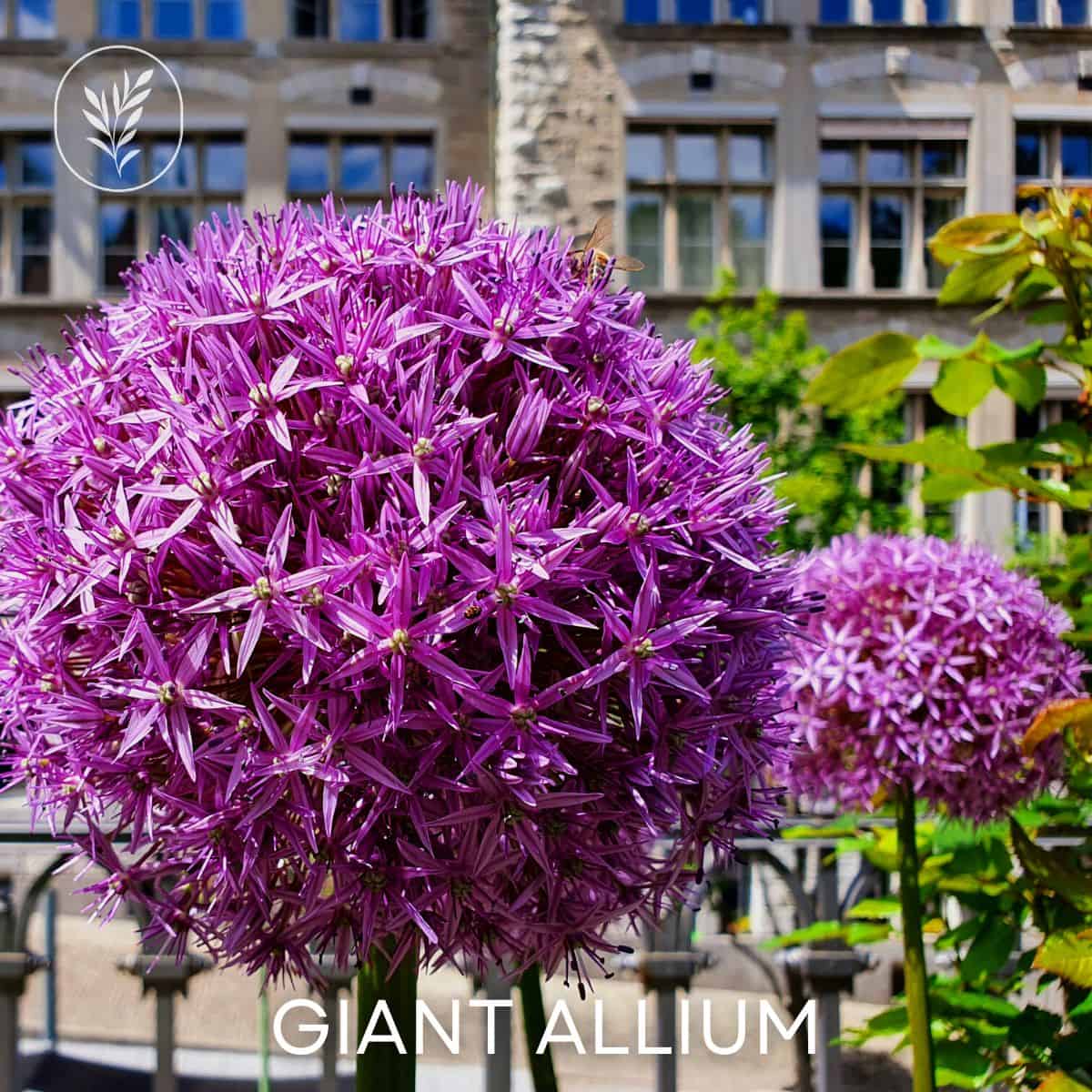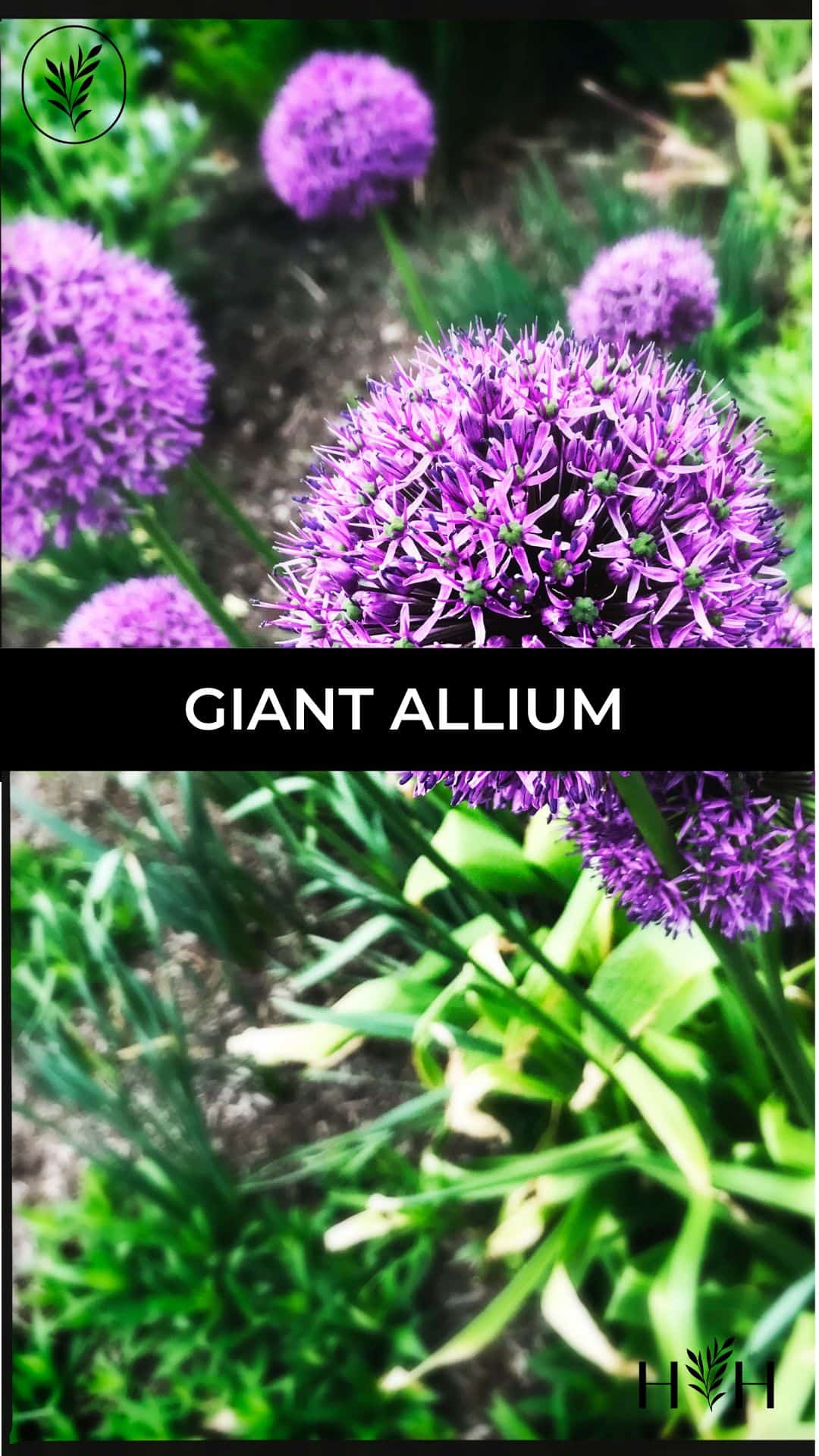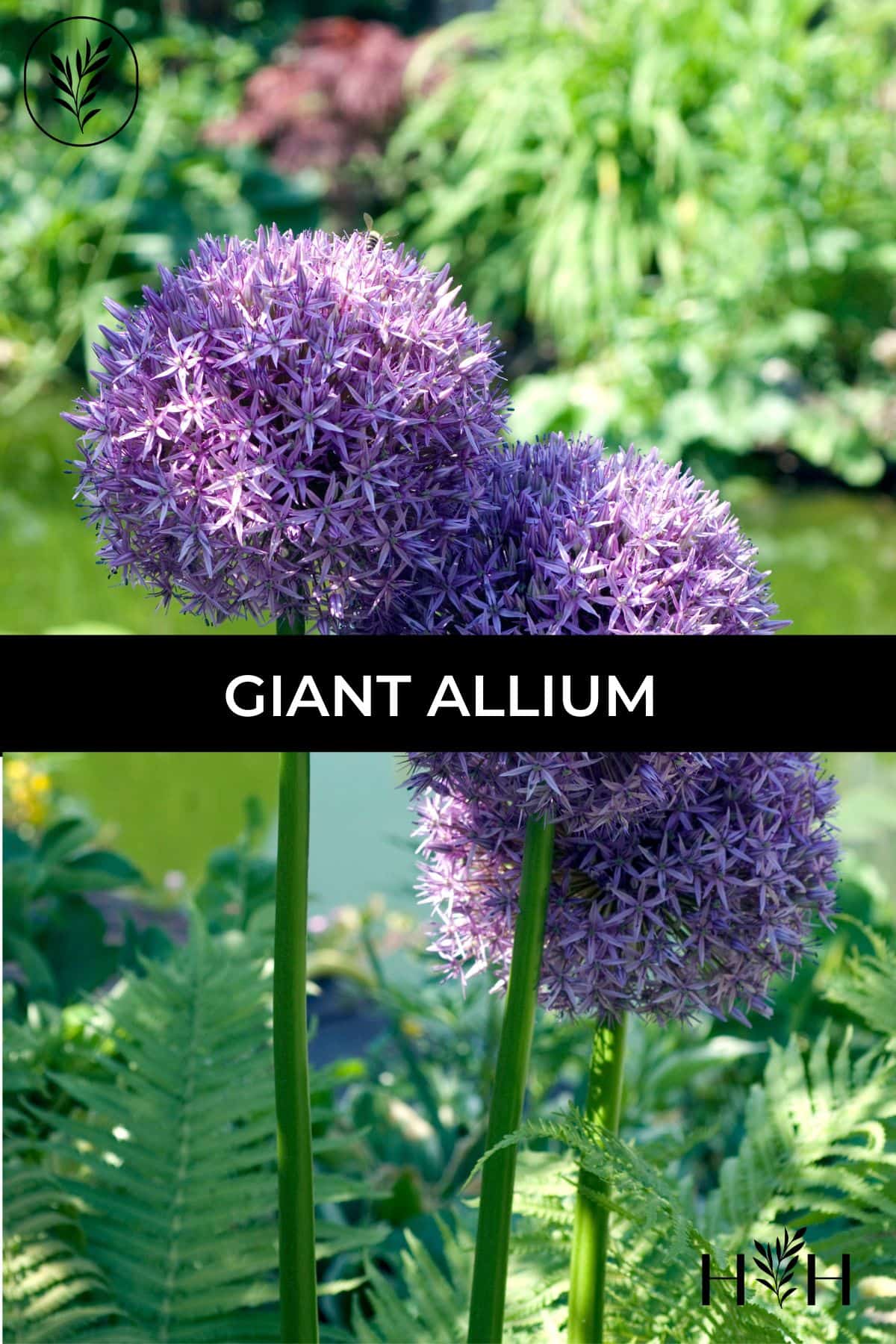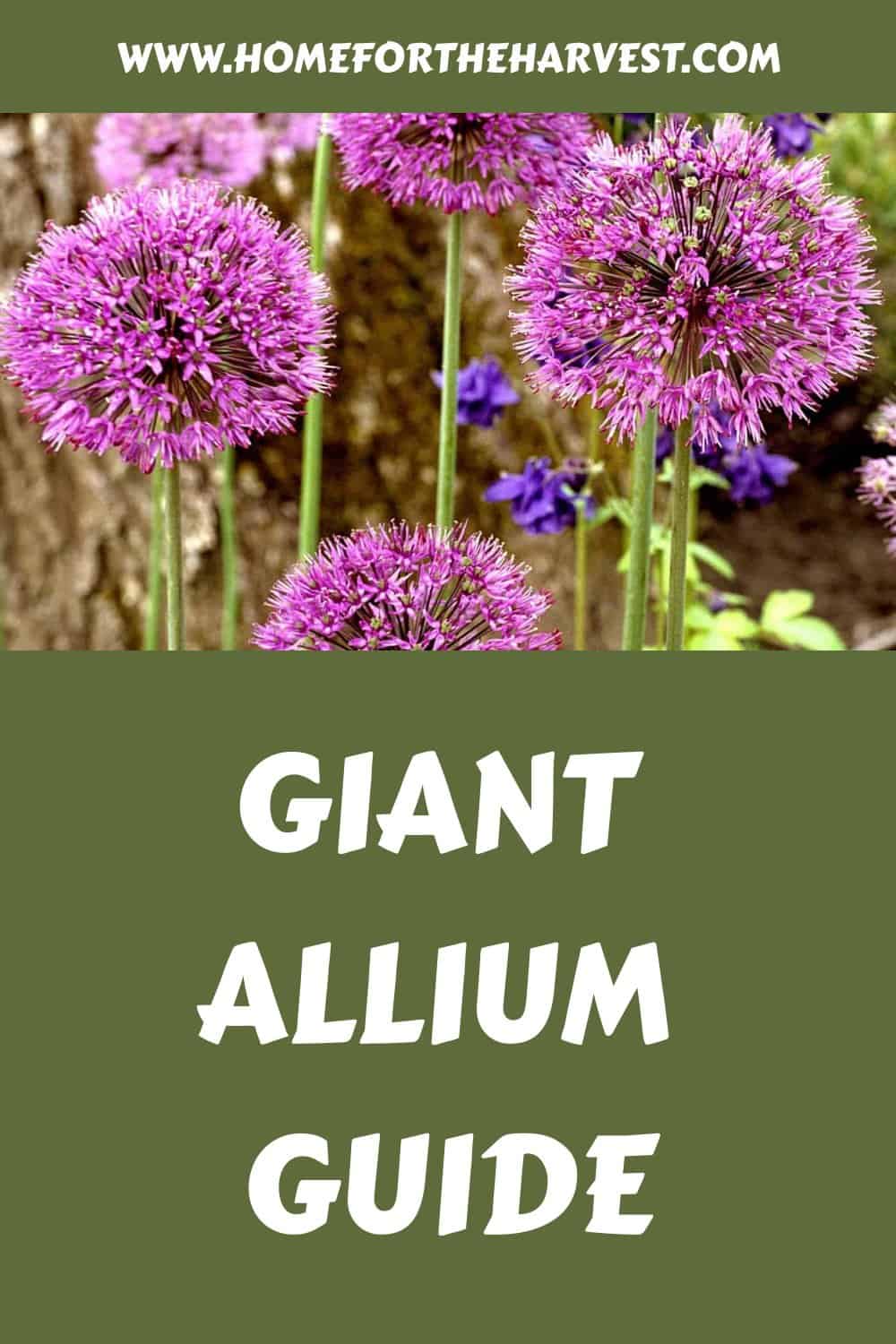Looking for those absolutely huge round ornamental onion flowers that appear in springtime? Look no further than Allium giganteum – the Giant Allium!
Giant Allium, or Allium giganteum, is the tallest species of cultivated ornamental onions. Popular varieties grow between 3′-5′ tall with spherical purple flowers that measure 6″-10″ wide each. Some of the best types of Giant Allium to grow include Globemaster, Beau Regard, Gladiator, and Ambassador. Giant Alliums can be grown in Zones 3-9 where the plants are perennial bulbs with flowers that come back every year. The large shape of the plants makes it hard to use them as cut flowers.
Read on to learn all about Giant Allium (Allium giganteum)!
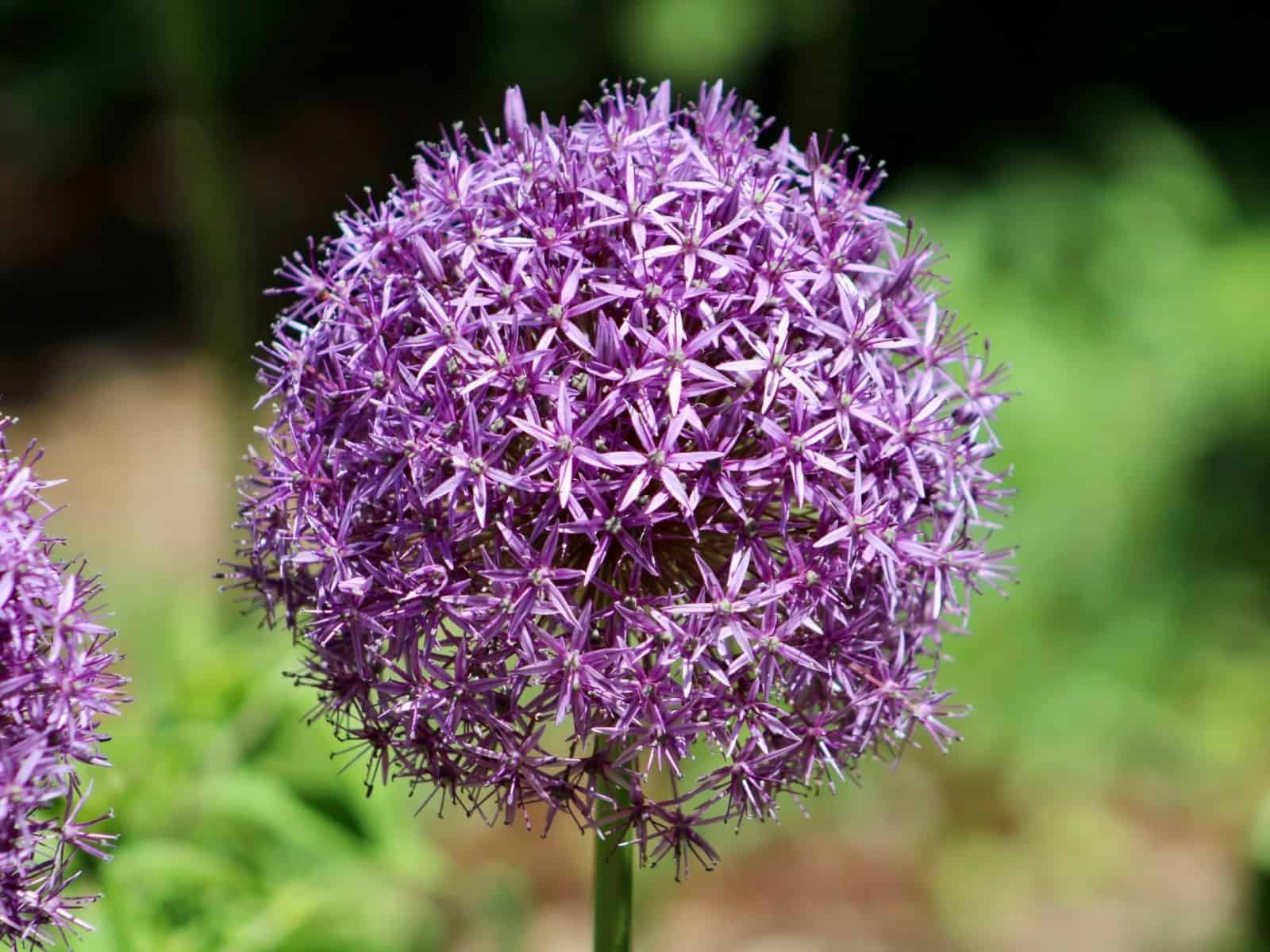
Giant Allium basics
The Giant Allium (botanical name Allium giganteum) is a perennial herbaceous bulbous plant known for its huge rounded flower heads. They are the largest variety of cultivated ornamental onions. The globe-shaped inflorescence of these plants is generally a purple color, blooming in late spring or early summer. Giant Alliums are the tallest Allium plants available. Allium giganteum is native to Asia.
Giant Allium (Allium giganteum) flowers typically grow 3′-5′ tall (36″-50″), including the flower head. Some varieties of Giant Allium (like Gladiator) tend to have smaller 6″ wide rounded flower heads, while types like Globemaster and Beau Regard have truly-giant 10″ wide flower spheres. Giant Allium plants tend to take up a space that’s about 12″-18″ wide in the flower garden.
Giant Allium plants (Allium giganteum) can be grown in Zones 3-9, depending upon the variety chosen. The Beau Regard Giant Allium is considered the most cold-hardy (down to Zone 3), while the most heat-tolerant cultivars are Globemaster, Gladiator, and Summer Drummer® Giant Alliums (up to Zone 9). If you don’t know your local growing zone yet, use the USDA Plant Hardiness Map to find your zone.
Giant Alliums are commonly used in flower beds and border gardens, but not usually seen as cut flowers. These hardy plants are drought-tolerant and deer-resistant in the flower garden. Allium flowers are known as magnets for attracting beneficial garden wildlife such as butterflies and hummingbirds.
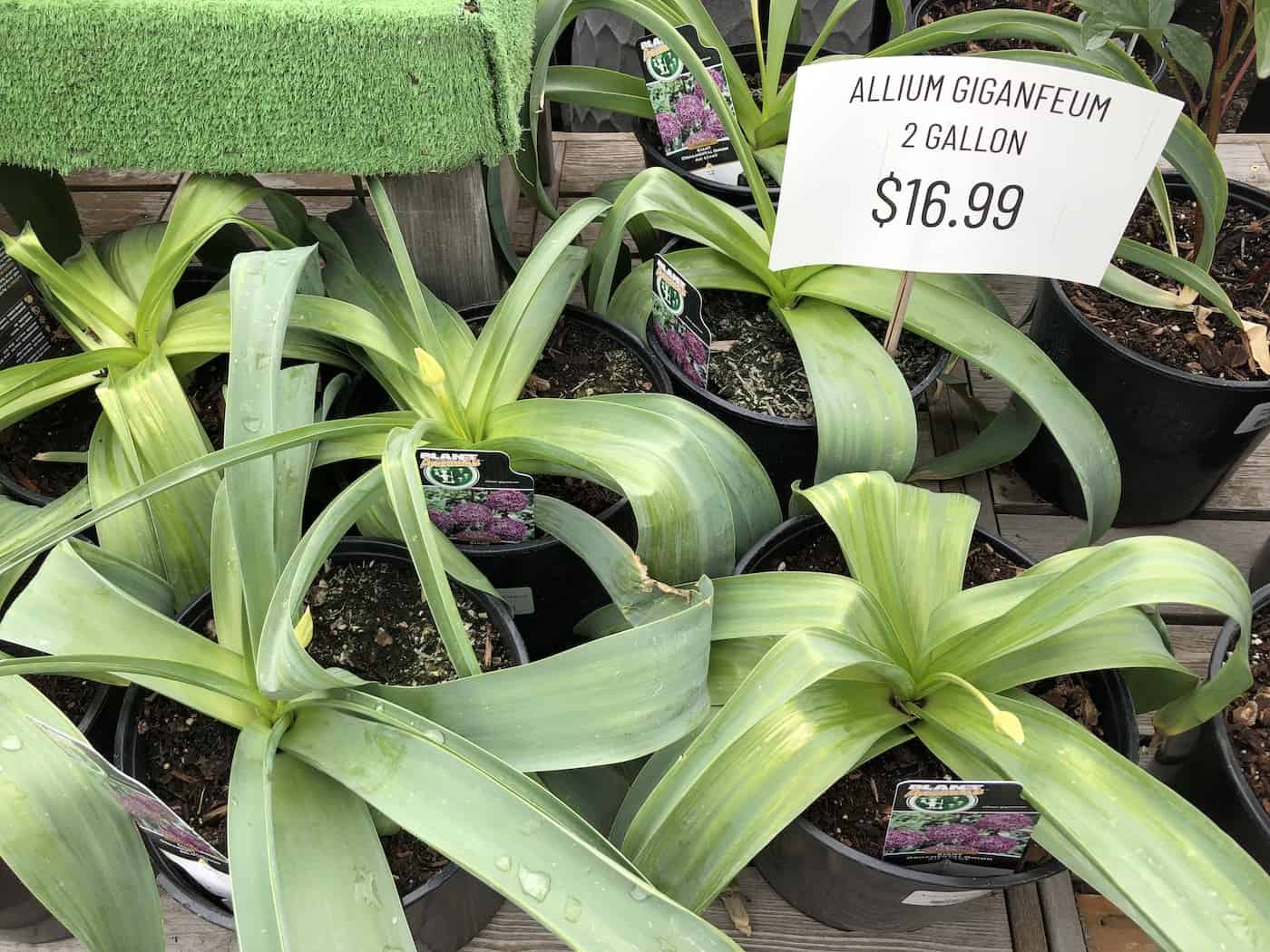
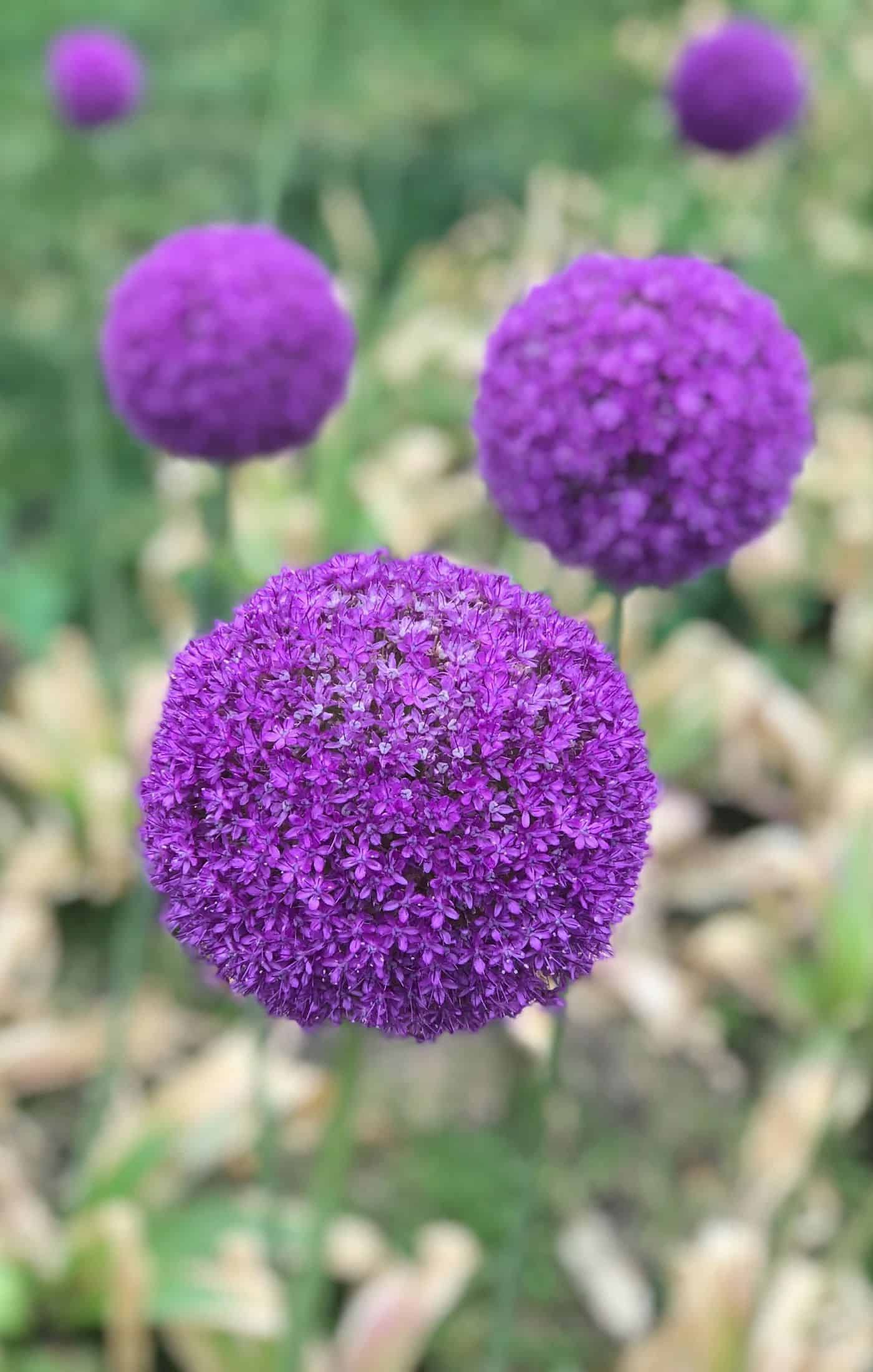
Giant Allium varieties
There are quite a few excellent varieties of Giant Allium (Allium giganteum) to grow. While the common cultivars are available in garden centers in the fall, specialty types are generally ordered in spring and summer from bulb companies, as they tend to sell out before the fall planting season.
Giant Allium bulbs are grown through the season and lifted by the plant nursery in the summertime for fall shipping to gardeners around the country.
Here are some of the most popular and highest-rated Giant Allium bulbs to buy:
- Globemaster Giant Allium (10″ Wide Lilac-Purple Flowers, 36″-50″ Tall, Zones 5-9)
- Beau Regard Giant Allium (10″ Wide Purple-Pink Flowers, 36″-50″ Tall, Zones 3-8)
- Gladiator Giant Allium (6″ Wide Dark Purple Flowers, 36″-60″ Tall, Zones 4-9)
- Ambassador Giant Allium (8″ Wide Dark Purple Flowers, 36″-48″ Tall, Zones 4-8)
- Summer Drummer® Giant Allium (8″ Wide Dark Violet Flowers, 48″-60″ Tall, Zones 4-9)
Many of these types of Giant Alliums have received the prestigious RHS Award of Garden Merit, including Globemaster (1995), Beau Regard (1995), Gladiator (1995), and Ambassador (2016).
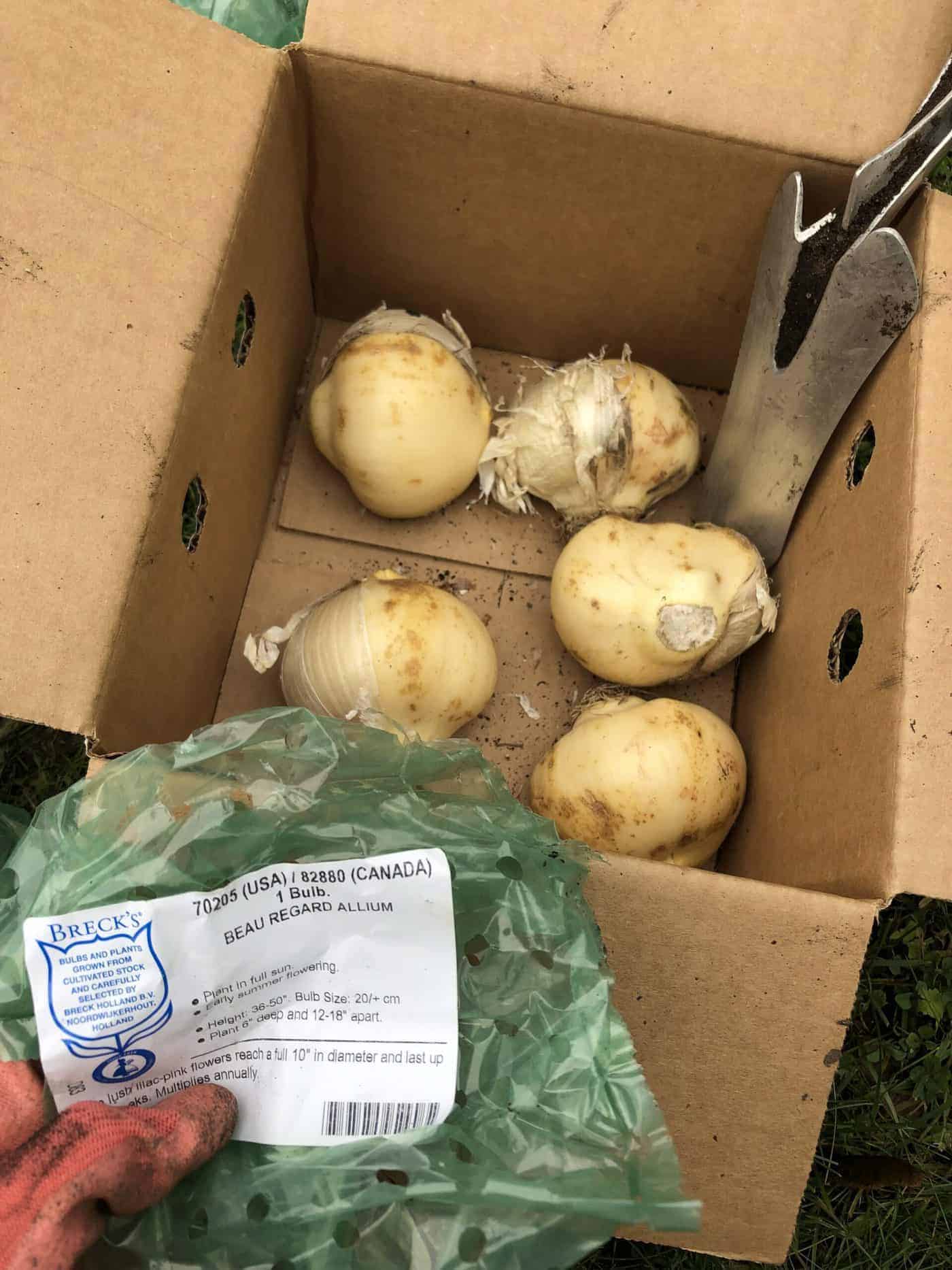
When to plant Giant Allium bulbs
Giant Allium bulbs are planted in the fall. Giant Alliums are typically planted in September in the coldest areas (Zones 3-4) and in October in more temperate climates (Zones 5-9). That said, Giant Allium bulbs can be planted any time during fall as long as the soil is not yet frozen.
Where to plant Giant Allium bulbs
Giant Allium bulbs grow best when planted in a full-sun planting location with well-draining soil. While the plants are tolerant of partial sun, the flowers bloom best when the foliage receives 6-8 hours of direct sunlight per day. In the hottest climates (Zones 7-9), morning sunlight is preferable to harsh afternoon sunlight if possible.
While Giant Allium bulbs grow best in well-drained sandy loam soil, they are tolerant of poorer soils, including acidic soil and clay soil. A garden soil test can help determine the composition of your soil and recommend any potential amendments or bulb fertilizers. A good homemade compost like leaf mold can help improve and add nutrients to most garden soils.
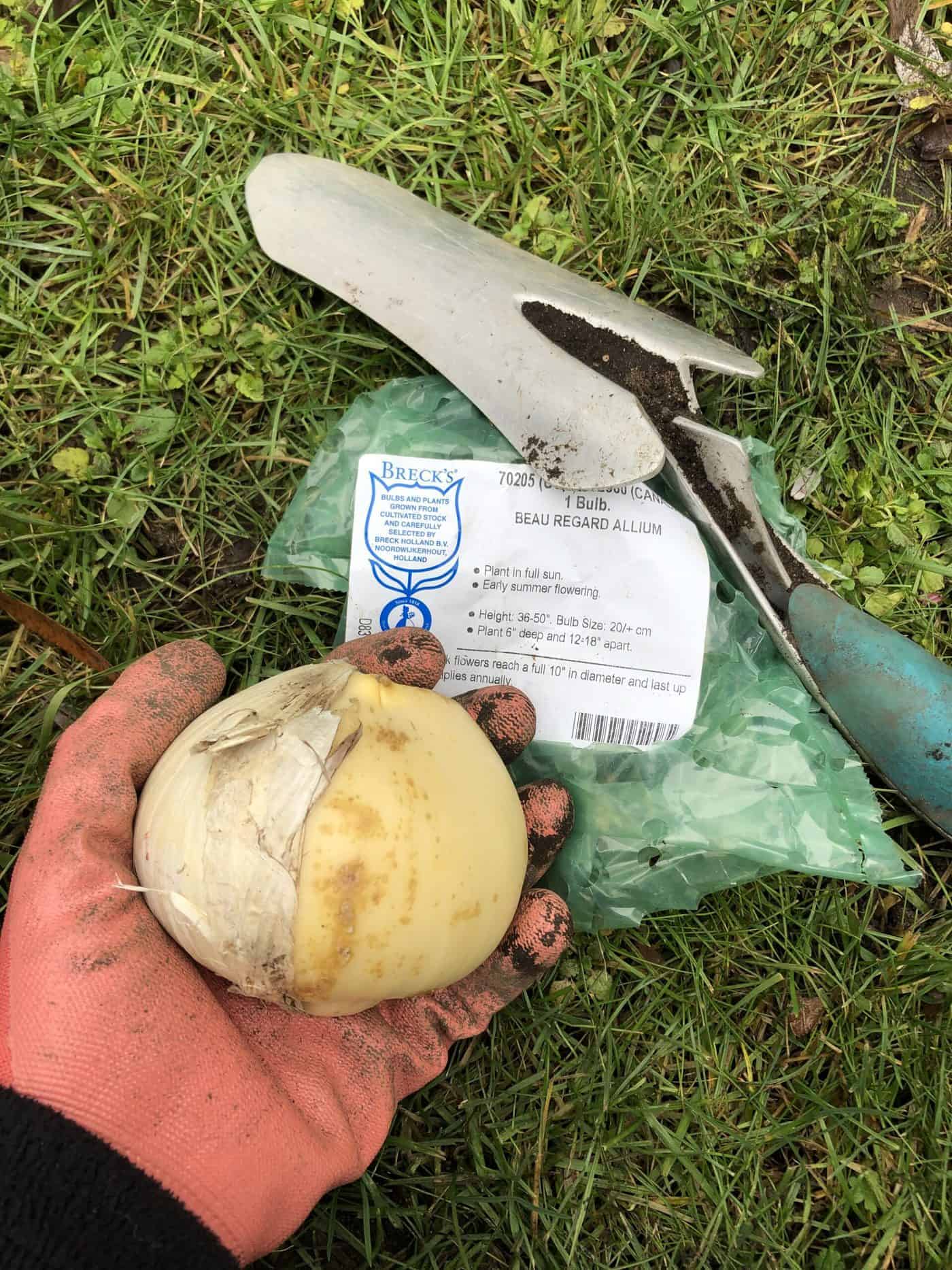
How to plant giant allium bulbs
Giant allium bulbs are softball-sized flower bulbs that should be planted carefully as they tend to be quite pricey. Take care when unpackaging the bulbs so as not to damage them prior to planting.
These huge bulbs require deep planting holes, generally around 8-10″ deep. Some bulb planters can be used to dig these deep holes, or you can use a long-handled shovel to dig the planting hole. In nutrient-poor soils, a bulb fertilizer can be mixed into the soil at the bottom of the planting hole.
Place the Giant Allium bulb into the planting hole with the root-base at the bottom and the slightly-pointed end pointing upwards towards the sky. Carefully backfill the planting hole with the original soil that was removed to dig the hole. Water the area very deeply after planting. This is also a great time to apply a 1″ thick garden bed mulch of compost or leaf mold.
In the coldest areas (Zones 3-4), a protective winter mulch can be applied over the planting area after the ground freezes. Lay evergreen boughs over the planting bed or spread shredded leaves, compost, or pine needle mulch.
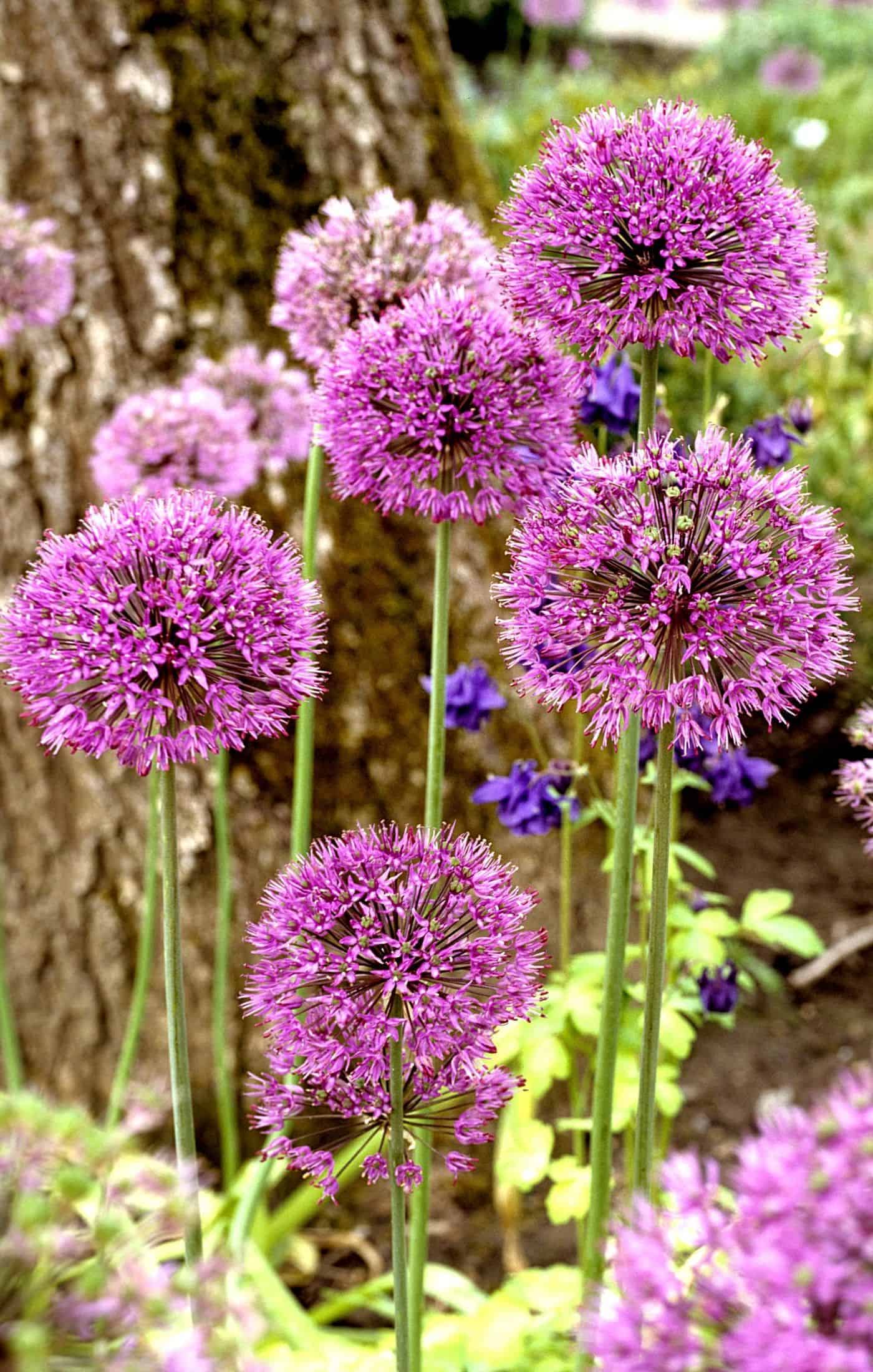
Gardening tips for growing Giant Alliums
Giant Alliums are easy to grow once the roots have become established in the soil. Watch the planting area in the spring to observe the ground thawing and the first allium sprouts coming up through the soil. Water the planting area quite deeply about once a week in the springtime unless your garden has received heavy spring rains (typically over 1″-2″ of rain per week).
Giant Alliums can be fed with bulb fertilizer in the spring once the green shoots start to emerge from the soil. Water the planting bed thoroughly after fertilizing to start to move the nutrients down into the soil towards the bulbs. Wash off any powdered fertilizer that lands on the foliage.
Giant Alliums tend to bloom in late spring or early summer. These large flowers take time to grow their substantial foliage and flower head and therefore bloom after many other spring bulbs. Due to their large size, they don’t make good cut flowers.
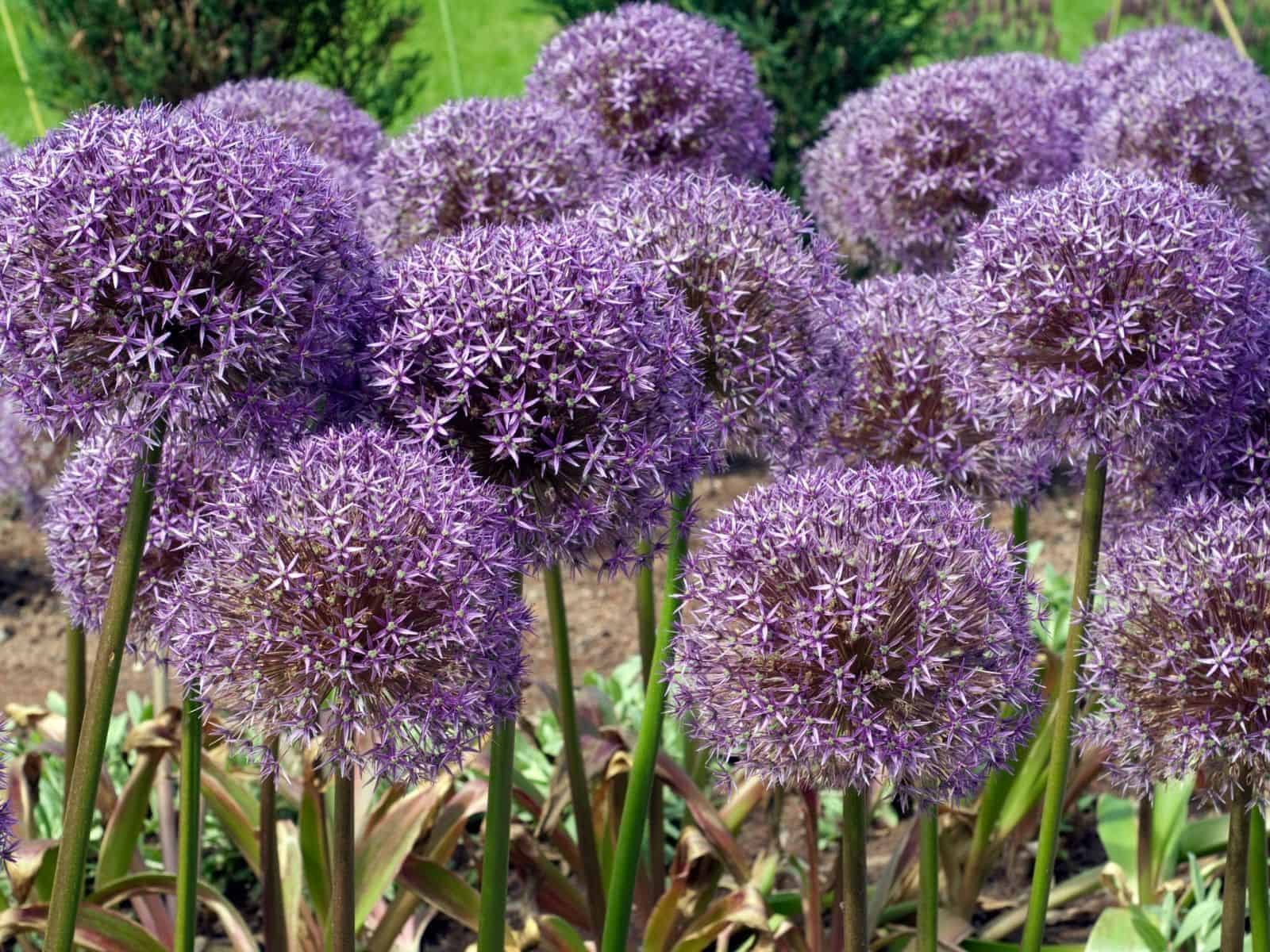
Plant care for giant allium after blooming
Giant Allium flowers can either be left standing or be deadheaded as the blooms fade in summer. Leaving the rounded flower seed heads standing can provide food for beneficial garden creatures as well as create fall and winter interest in the garden. Alternatively, deadheading the flowers before they go to seed can encourage the plant to put its energy into the bulb, helping the plant multiply and naturalize an area more quickly.
Always leave the foliage of Giant Allium plants alone in the summertime rather than pruning it back. The long green leaves require several months of direct sunlight to photosynthesize and create the energy required to produce next year’s flowers. Let the foliage turn yellow on its own in the late summer and die back naturally. Only remove the foliage once it has wilted and died back.
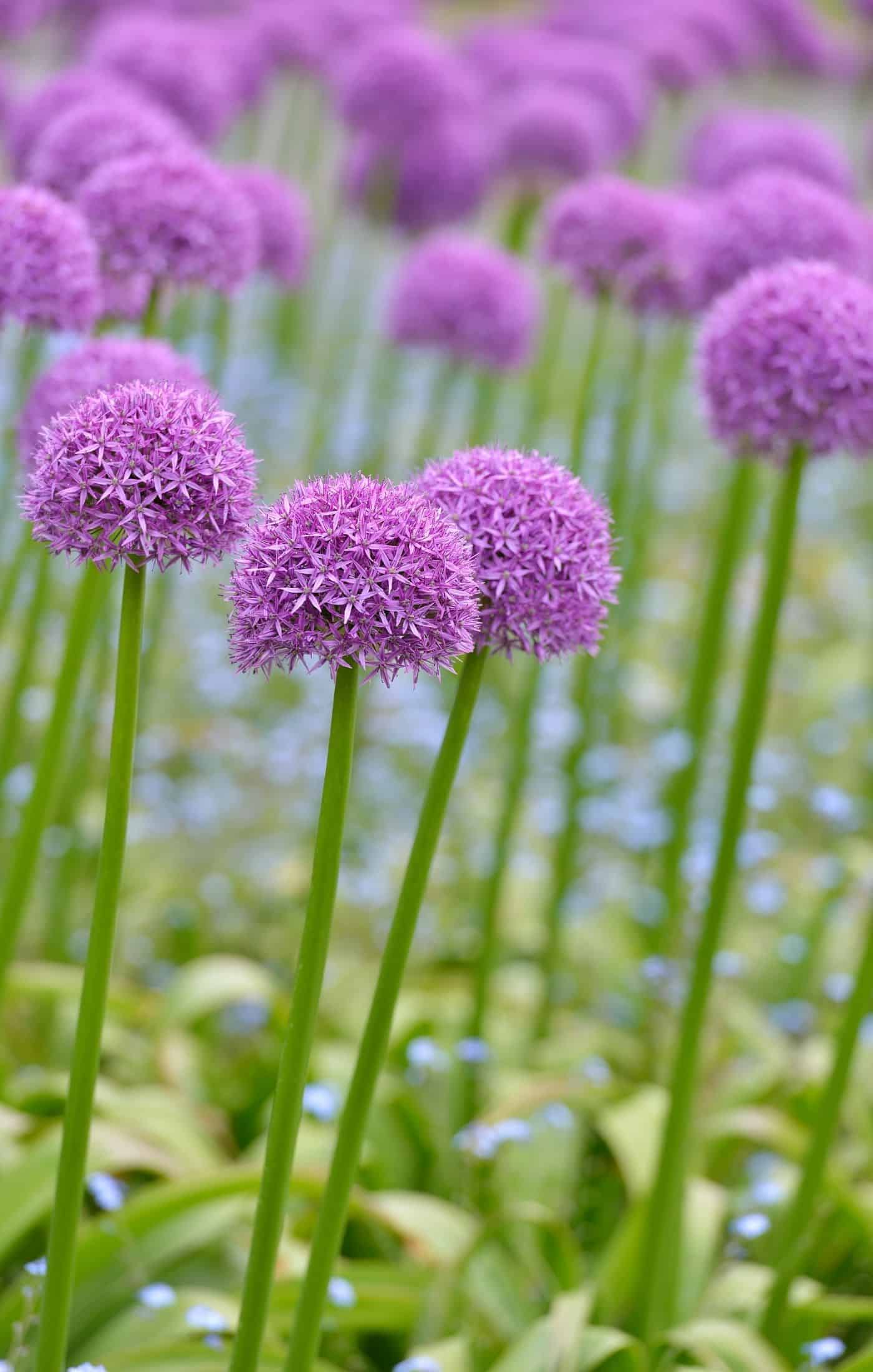
Companion plants for Giant Allium
Giant Allium plants look their best in the garden when accompanied by other flowers and ornamental plants. A full flower bed can also help to attract pollinators to the area and encourage songbirds to nest nearby. If possible, choose some early spring bloomers as well as some plants that will fill in the ground area with greenery to camouflage the dying leaves of the allium plants in the summertime.
Good spring bulbs to plant alongside Giant Allium include daffodils and early types of tulips. Smaller bulbs like Snowdrops, Crocus, and Grape Hyacinth can be planted right on top of Giant Allium bulbs, as they don’t need to be planted very deep below the soil surface. Other flowers like Forget-Me-Nots, Peonies, Heather, and Baby’s Breath also look lovely.
For a flower-filled backdrop, consider hydrangea shrubs such as Incrediball, Endless Summer, or Limelight Hydrangeas.
To camouflage dying foliage, use ornamental grasses around Giant Alliums. You can also try plants like Foxglove, Bachelor’s Buttons, Coreopsis, Daylily, or Red Hot Poker as summertime-interest flowers that will disguise the allium leaves as they fade.


